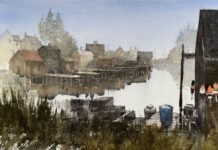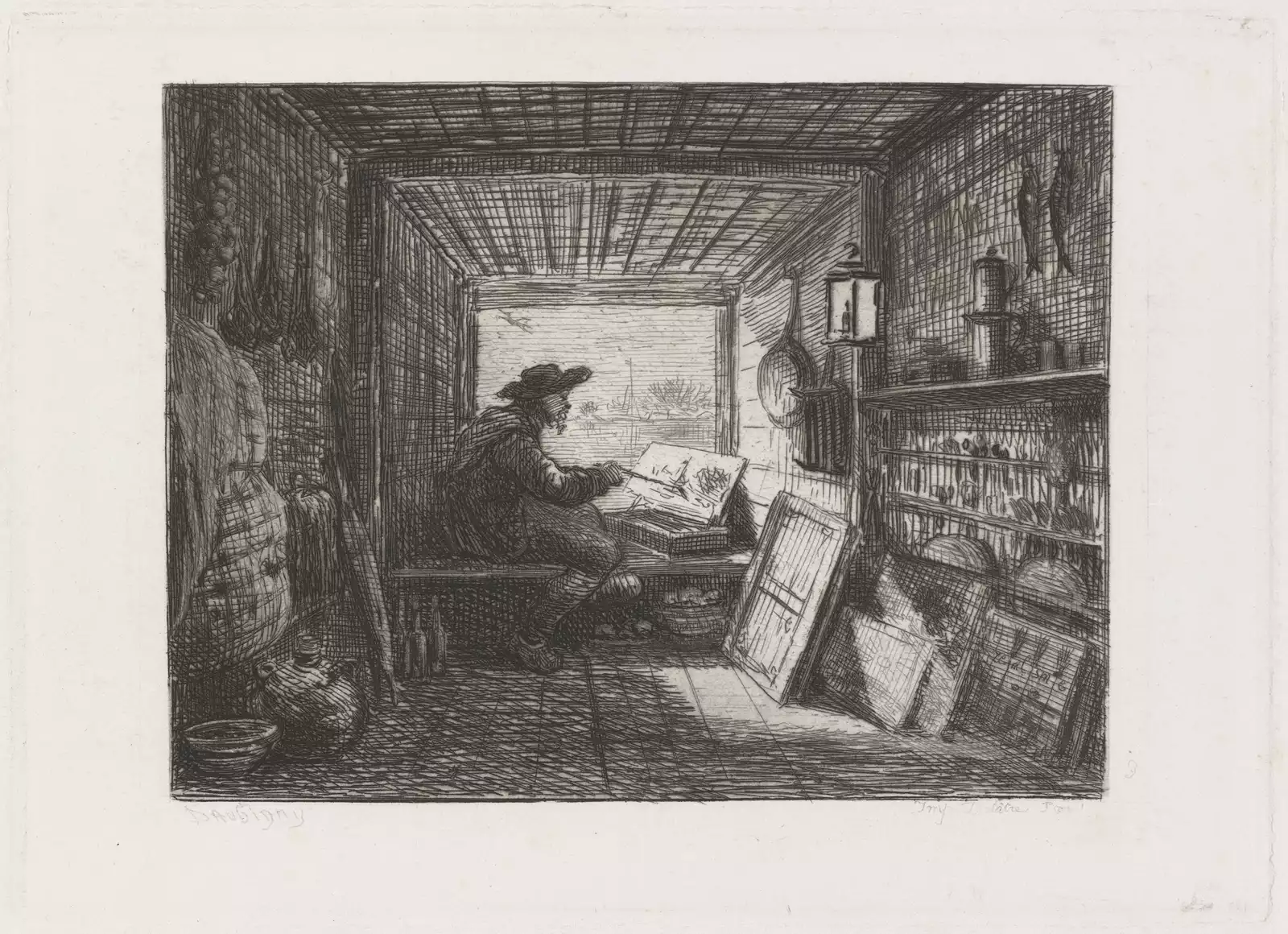
In 1857, French landscape painter Charles François Daubigny (1817–1878) purchased a 27-foot ferryboat, nicknamed the Botin (little box), and converted it into a floating studio from which he could observe and paint at all times of day. With his 12-year-old son Charlot on board as “cabin boy,” the artist created a visual diary of 47 ink drawings as he traveled the river Seine north of Paris. From his output, he selected 15 as the basis for the etching series Voyage en Bateau (The Boat Trip). The innovative, water-level perspectives influenced generations of younger artists, including the Impressionist Claude Monet (1840-1926), who at the encouragement of Daubigny built a studio boat of his own soon after moving to Argenteuil.
“A fair wind had brought me just enough money in one go to buy a boat and have a wooden cabin built on it just big enough to set up an easel,” wrote Monet. The floating studio enabled him to paint views from the River Seine that were otherwise inaccessible. Most often he would anchor his boat when working, but sometimes he painted as he drifted down the river, creating landscapes that are more a collection of momentary glimpses rather than a depiction of one specific spot.
I recently had the pleasure of checking in with Stanislaw Zoladz who has followed his artistic predecessors and taken to the water for unique viewpoints on both land and sea. Here’s what he had to say about his experiences.
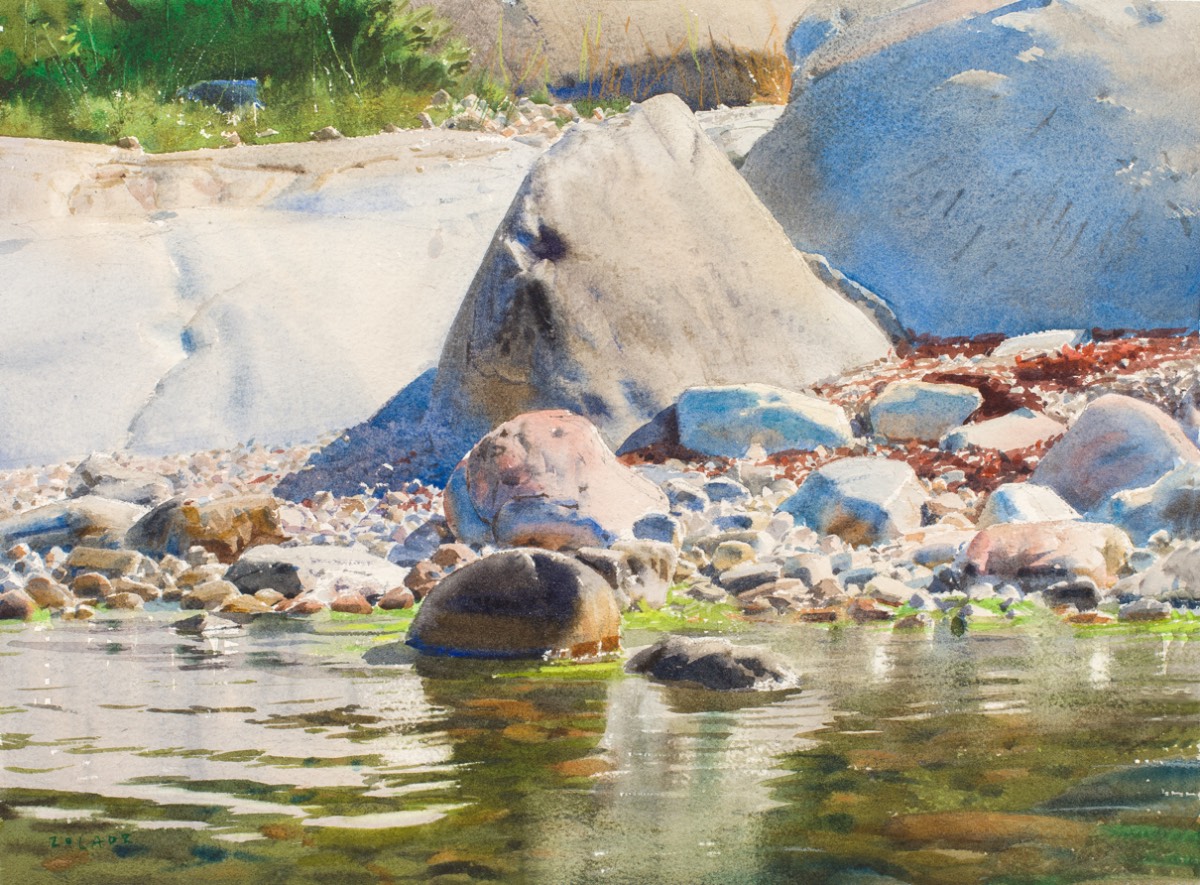
“ A major theme of my work centers on the meeting of two elements — water and rocks,” says Stanislaw Zoladz. “A natural contrast exists between the soft, moving, transparent waters of the sea and the hard, heavy, unyielding rocks and stones of the archipelagos I paint. The nature of their meetings can take various forms, from still, calm, and picturesque to dramatic and violent. Regardless of the circumstances, the characteristics of both are enhanced by the comparison.
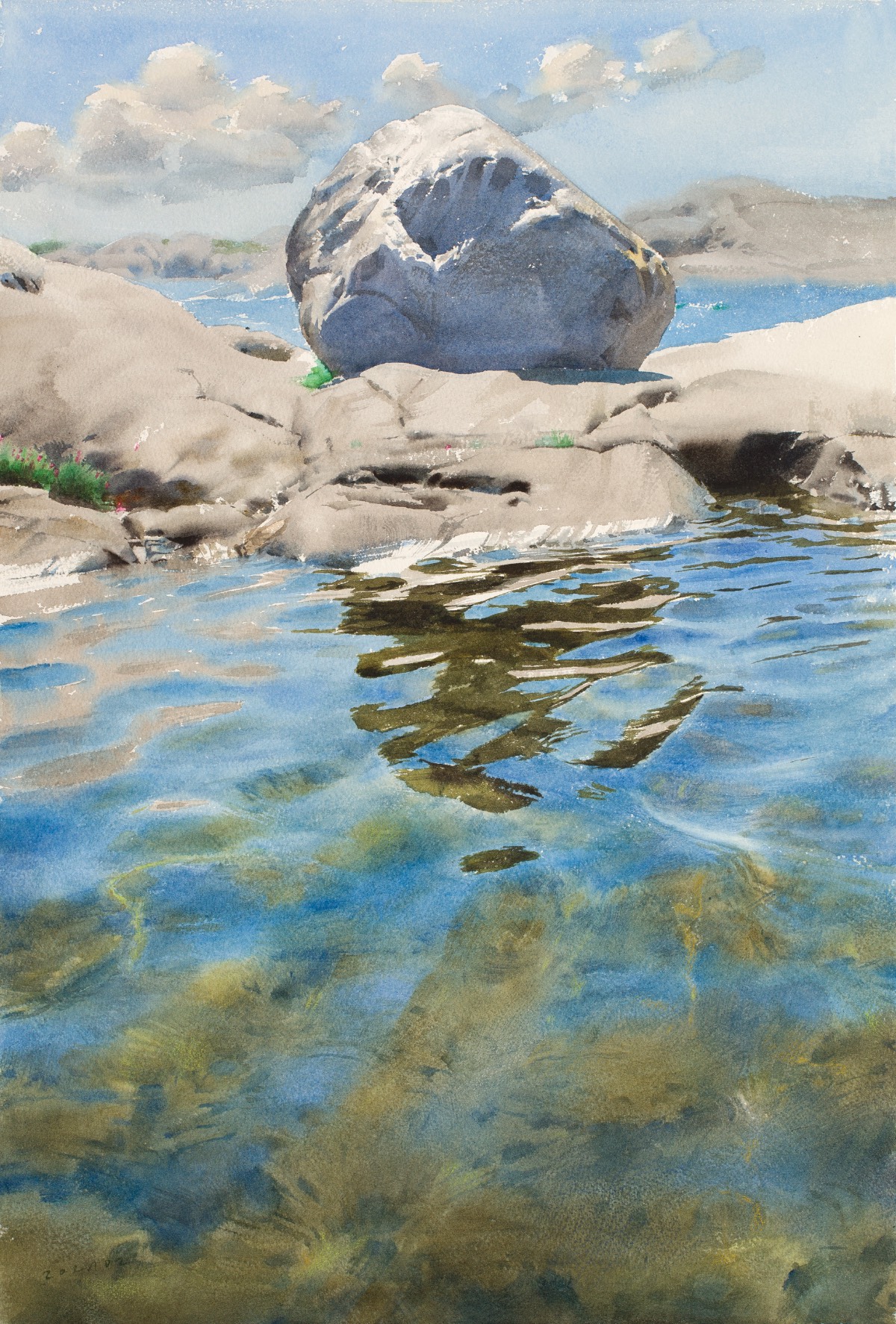
“The best way for me to access these motifs is to work from a relatively small rowboat that allows me to reach deeper waters where I can get a good view of the shoreline, and also get close enough to capture details in the shallow water. My aim is to capture the waterline and the rhythms of the waves hitting the beach. To do that, I have to create the illusion of rocks sitting under the surface of the water as well as rocks breaking through or sitting above the water. It all hinges on perspective. For this, I need to stay close to the water, not far above the surface. In the end, the stones are only there to help my composition; my focus is on the water.”
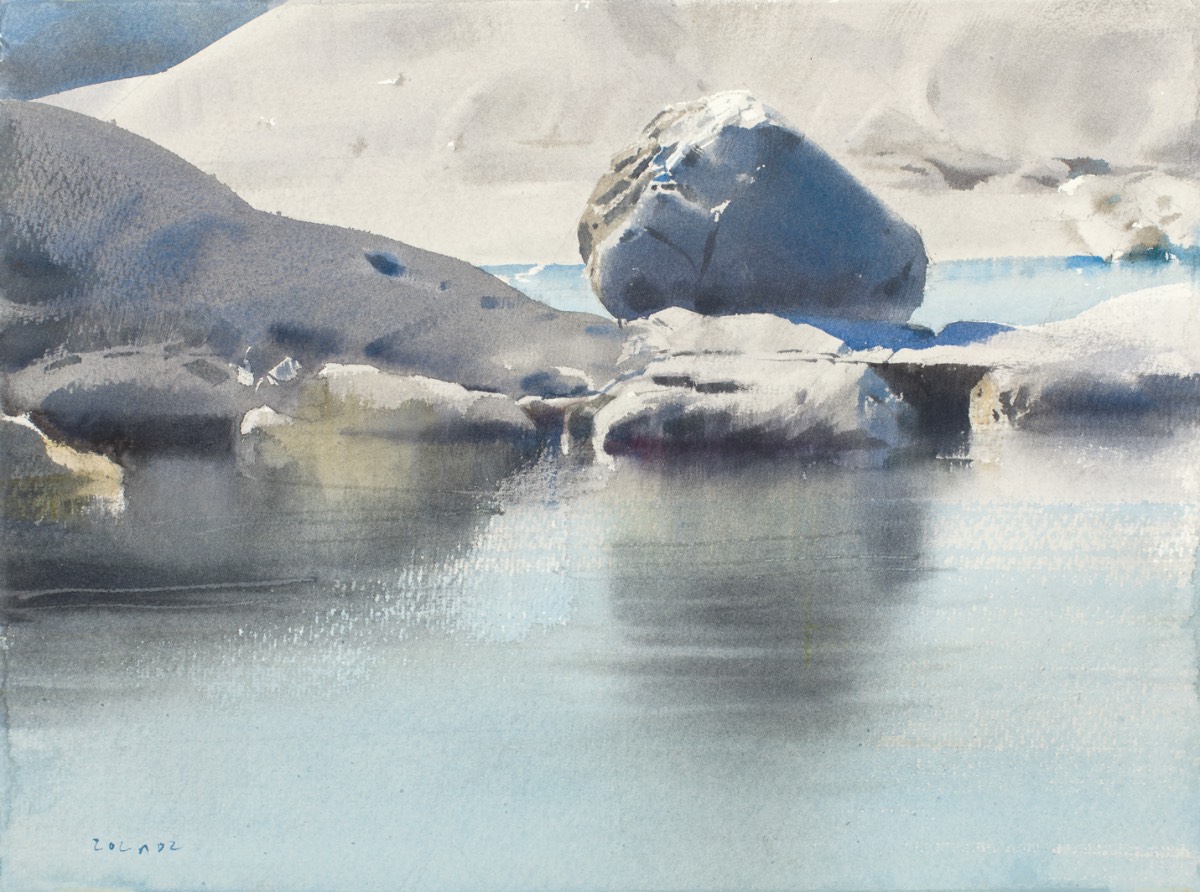
Boat: A Uttern 4300, outfitted with a motor to help me reach the archipelago about 1.5 km off the coast, where I find the rocks I most like to paint.
Waters: I spend several weeks on my boat every year, traveling between small islets of archipelago about 100 km north of Stockholm in the Baltic Sea, or in small bays, close to the mainland. I can only go out to paint on the small boat if the wind is not too strong and the waves not too high.
CHALLENGES OF PAINTING ON THE WATER (AND HOW TO SOLVE THEM)
By Stanislaw Zoladz

- Creating stability. I need my boat to stay in one place while I’m painting so that I can focus on my motif. To create even stabilization, I use ropes and two anchors, one on the rear and one on the fore. In addition, I face the bow to the waves to minimize rocking.
- Reckoning with the sun. To provide shade, I typically set up two umbrellas on my boat. For this, the umbrellas need be white or silver on the outside to reflect heat and have a liner on the underside that won’ reflect ambient light onto the painting. Particularly windy days can easily turn my umbrellas into sails, adding to the urgency of painting on location.
- Timing the shadows. The strong sun makes colors invisible in the middle on the day. In July, the sun comes up before 4 a.m., and around 5 in August. I need be on site really early to capture the moment when the stones in the background will be illuminated from the side, creating interesting shadows. Fortunately, if I don’t finish, I can paint into the evening and experience the same light and shadow conditions — only from the other side.
- Battling the cold. In early summer, the water temperature is low, and I can get very cold sitting on my boat. To keep warm, I need to dress in layers so I can adjust throughout the day.
Paint along with top artists from around the world, including Thomas Schaller, Herman Pekel, John Salminen, Barbara Nechis, Janet Rogers and others at next year’s Watercolor Live!

